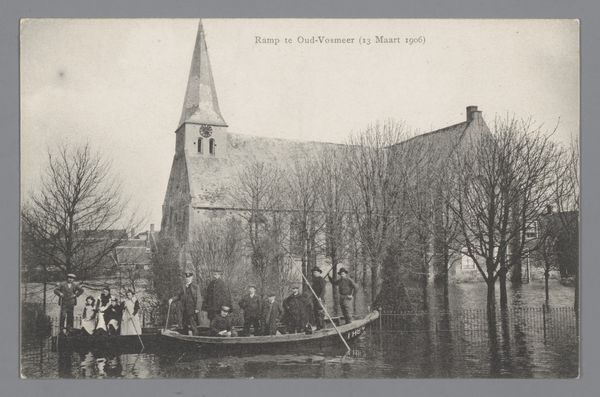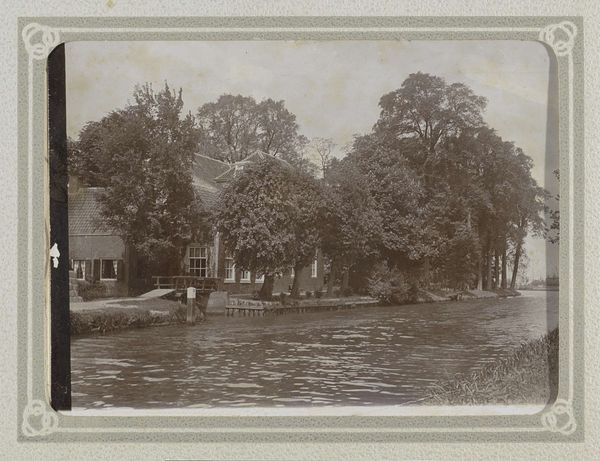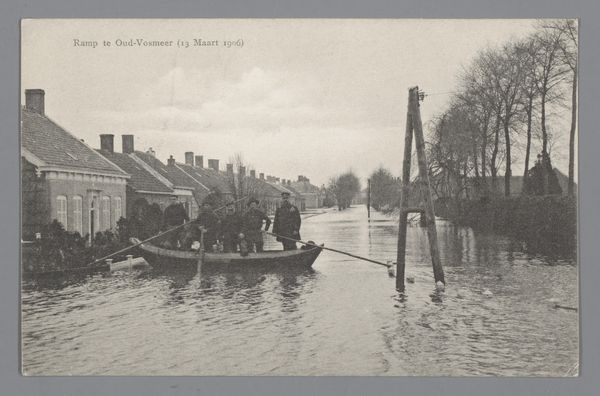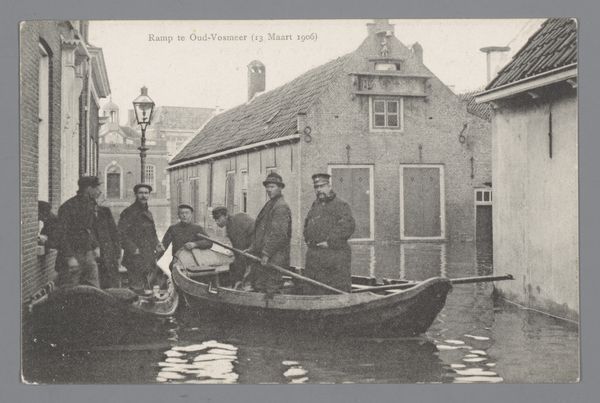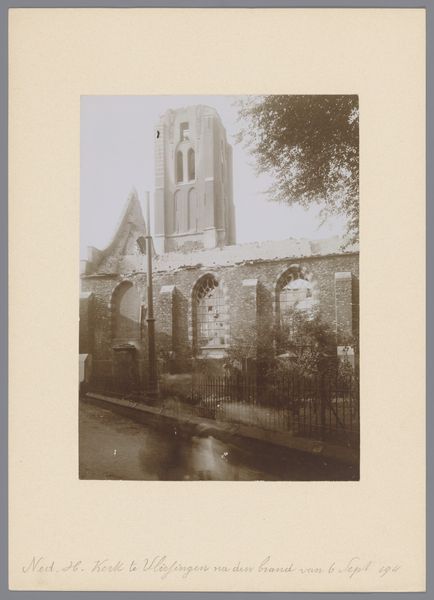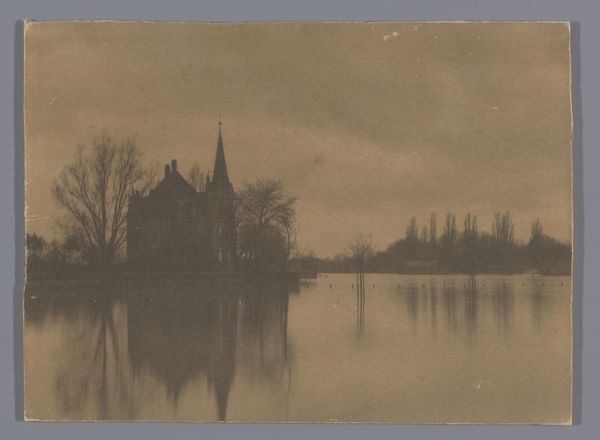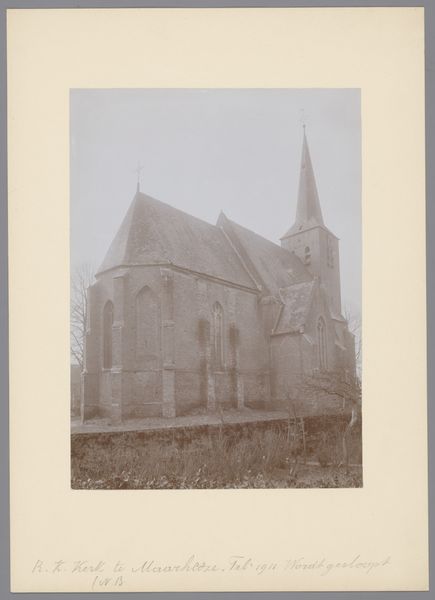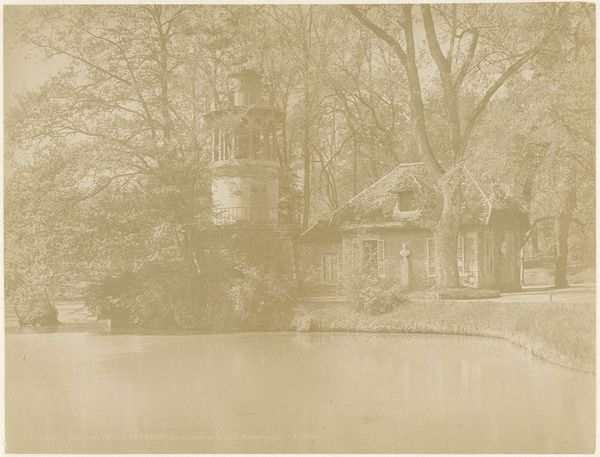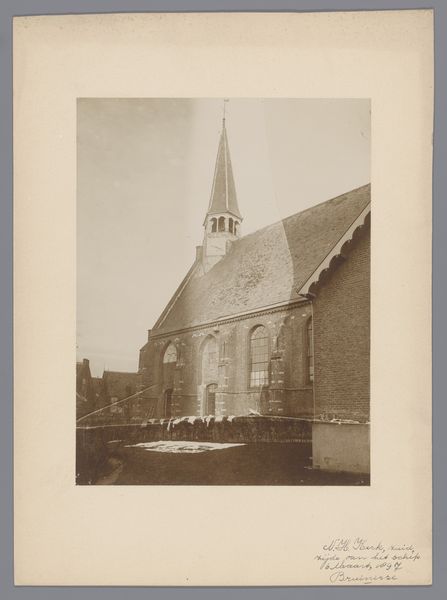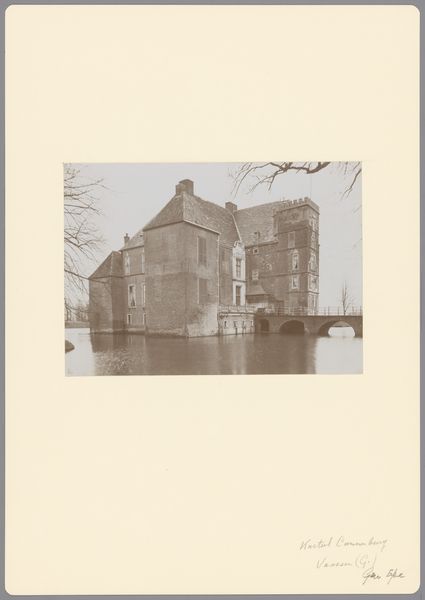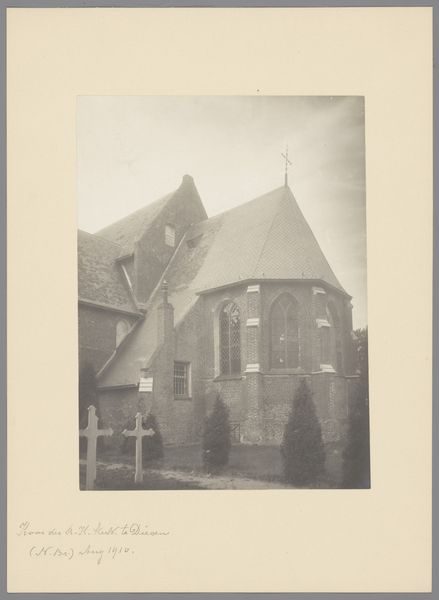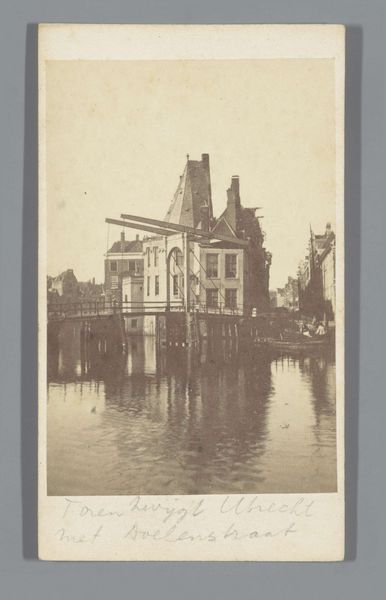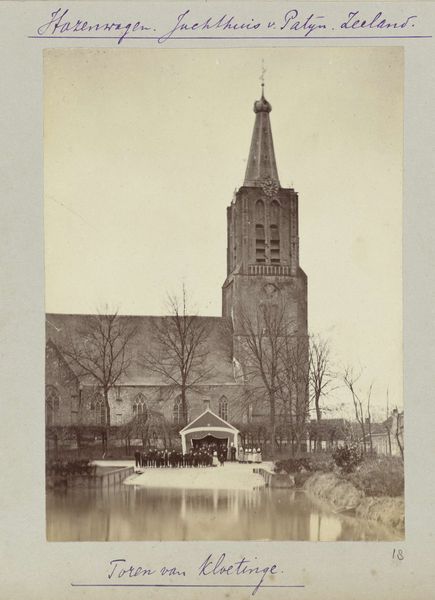
photography
#
landscape
#
photography
#
genre-painting
#
realism
Dimensions: height 9 cm, width 14 cm
Copyright: Rijks Museum: Open Domain
Curator: The photograph "Ramp te Oud-Vossemeer op 13 maart 1906" by the Gebroeders van Straaten captures a striking moment in time. Editor: It certainly does. There's a quiet desperation in this image that resonates even now. The subdued tones heighten the vulnerability. Curator: Indeed. The choice of photography as a medium provides an objective lens, recording the event and creating a sense of immediacy. One cannot ignore the presence of labor that has gone into creating this work of art. Editor: And what is the purpose of this photography and this work? We are looking at a social landscape profoundly impacted by this disaster. Consider the figures—a family being transported through flooded streets by boat. It speaks to issues of displacement, climate, and class. Their garments speak of middle-class standing. What was lost? Curator: What the image perhaps most successfully visualizes are issues surrounding material culture, and I am drawn to that boat specifically. One needs to think about access and materials in its very construction: it implies a sophisticated system of resources, craftspeople, and a transportation infrastructure to take these objects to people when needed most. Editor: Absolutely. It highlights the uneven distribution of suffering. Some are navigating the disaster, while the steeple rises undisturbed, a stark symbol of institutions perhaps failing the community. Curator: You raise interesting points about religion and the state, but I am inclined to see the church as material as well; as the manifestation of resources and manual labour, assembled stone-by-stone by the many generations before the deluge came. Editor: Of course! The stones remind us that the foundations upon which a whole town sits are susceptible to the forces of nature. I'm stuck by the looks on these peoples faces - not only their sense of displacement, but maybe the shift they might be encountering in terms of their relation to both the church, but also one another in this moment. Curator: To be able to explore a single image in this much depth - it reinforces my perspective of artworks as cultural and economic entities whose meanings and materials intertwine to deliver potent commentary. Editor: I concur; viewing the photograph through distinct interpretive lenses has clarified and deepened our understanding. It serves as a record, a statement, and, ultimately, a powerful artifact of a community in crisis.
Comments
No comments
Be the first to comment and join the conversation on the ultimate creative platform.

